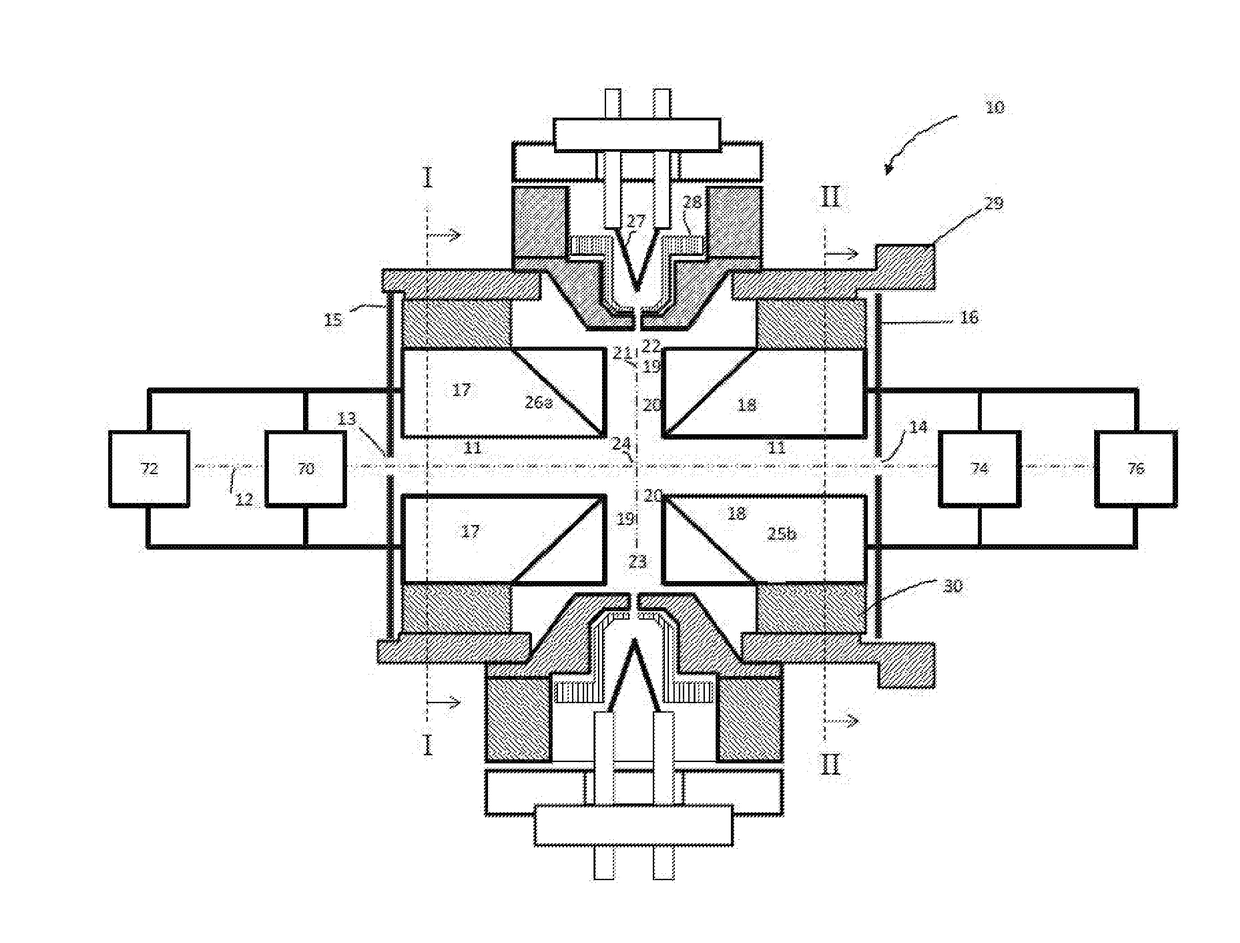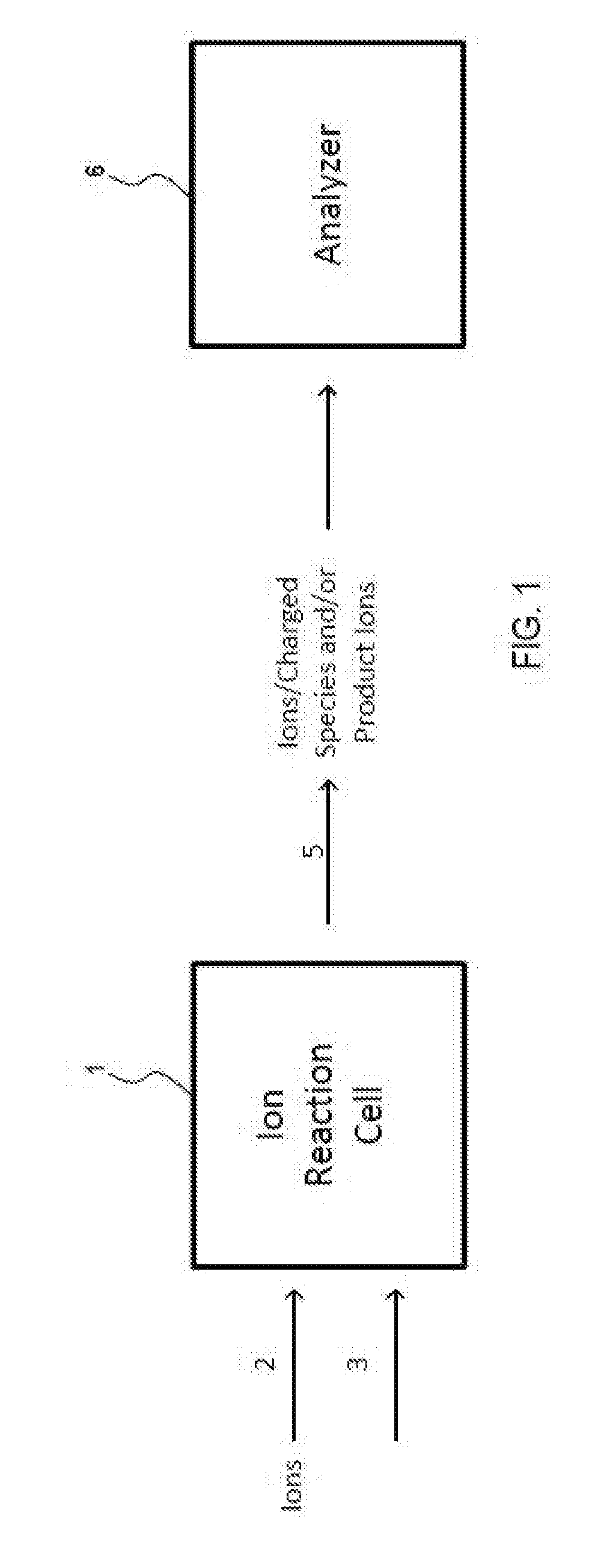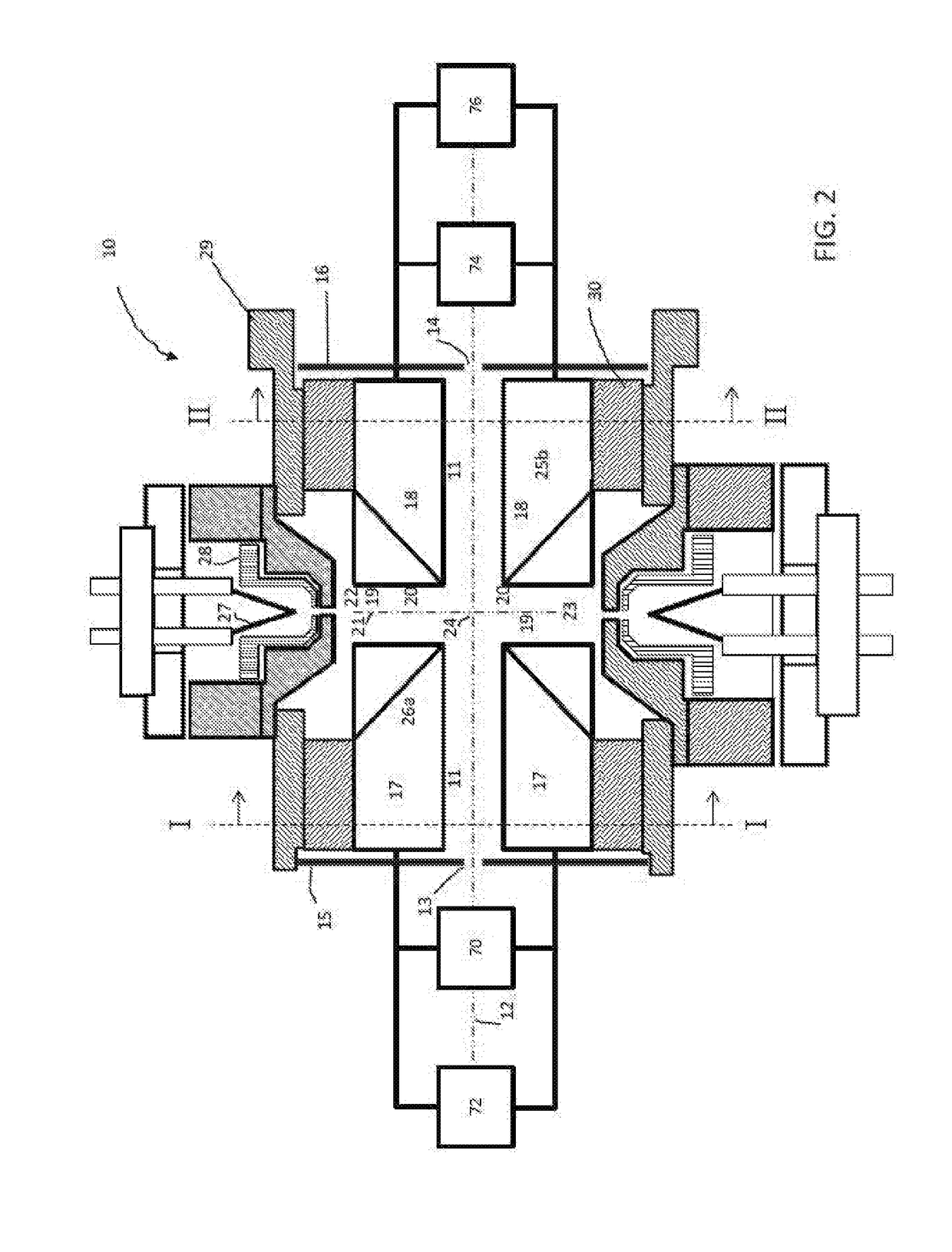Methods For Analysis of Lipids Using Mass Spectrometry
- Summary
- Abstract
- Description
- Claims
- Application Information
AI Technical Summary
Benefits of technology
Problems solved by technology
Method used
Image
Examples
example 1
ng Double Bond Location
[0062]With reference to FIG. 5, a sample included precursor ions for a first species 505 having a m / z of about 522 amu and a second species 510 having an m / z of about 496 amu. The first species 505 and the second species 510 may be found as contaminations of a POPC sample. The precursor ions were subjected to EIEIO, which led to the formation of fragments or fragment ions. The alkyl chains for each of the first species 505 and the second species 510 was reconstructed using each species' respective spectra 515,520 starting at the peak corresponding with an m / z of 299 amu. The arrows in the spectra 515, 520 represent non-radical species and the neighbor peaks at the arrows +H (or +1) indicate radical species. The radical species were produced by EIEIO and the non-radical species were formed by H. loss reaction. Each peak is made of three individual peaks: a non-radical peak, a radical peak, and a (carbon) C13 peak.
[0063]As shown in spectra 520, 14 amu spacing wa...
example 2
ng Double Bond Location in a Double-Alkyl Chain Molecule (POPC)
[0064]FIG. 6 depicts a spectra of a sample containing POPC dissociated using EIEIO. POPC contains two alkyl chains, one of which has a double bond. An electron may dissociate one of the alkyl chains. The resulting EIEIO spectrum depicted in FIG. 6 indicate the presence of two series of fragments. If there is no double bond in the alkyl chains, the spectrum profile will include 14 amu spacing for both radical fragments and non-radical fragments. A local spectrum profile will include twin peaks for the radical fragments and non-radical fragments. If there is a double bond in the alkyl chain, the spacing at this location will be 12 amu for both radical fragments and non-radical fragments. As depicted in FIG. 6, 12 amu spacing was observed at the double bond location.
example 3
of Oxygen Gas with Radical Fragments
[0065]Referring now to FIG. 7, therein is depicted spectra of a sample containing POPC dissociated using EIEIO to generate radical fragments. In a first spectra 705, the radical fragments were not reacted with oxygen and in a second spectra 710 the radical fragments were reacted with oxygen gas to generate oxygen-radical fragments. The oxygen may react with radical fragments of POPC alkyl chains dissociated using techniques described herein, including EIEIO. The spectra 705, 710 include local peak profiles having a radical peak and a non-radical peak (as in Examples 1 and 2, above). As shown in spectra 705, the oxygen-radical fragments generated additional peaks, indicating that the fragment is a radical. The oxygen-radical fragment appears as a +32 amu adduct relative to the radical fragment peak that has not reacted with oxygen. For the POPC sample in spectra 710, the oxygen-radical fragments from the single bond chain showed a 14 amu spacing, w...
PUM
 Login to View More
Login to View More Abstract
Description
Claims
Application Information
 Login to View More
Login to View More - R&D
- Intellectual Property
- Life Sciences
- Materials
- Tech Scout
- Unparalleled Data Quality
- Higher Quality Content
- 60% Fewer Hallucinations
Browse by: Latest US Patents, China's latest patents, Technical Efficacy Thesaurus, Application Domain, Technology Topic, Popular Technical Reports.
© 2025 PatSnap. All rights reserved.Legal|Privacy policy|Modern Slavery Act Transparency Statement|Sitemap|About US| Contact US: help@patsnap.com



